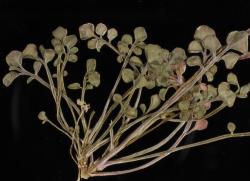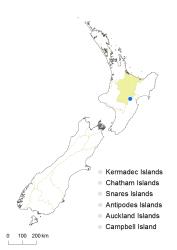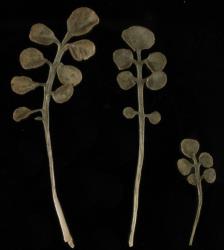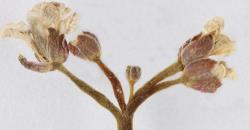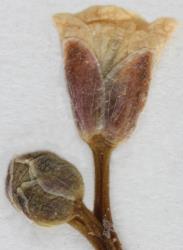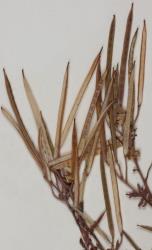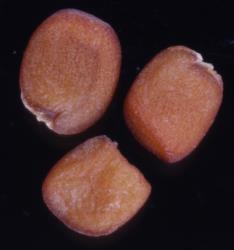Perennial herb, single rosette or with multiple rosettes on short lateral branches, stems sometime rhizomatous. Leaves up to 60 mm long, pinnatisect, glabrous; lamina 2.5–15.0 × 4.5–9.0 mm, green, coriaceous; petiole up to 24 mm long. Terminal pinna 1.5–2.5 × 1.0–2.5 mm, simple, broadly orbicular to orbicular-rhomboid; margin entire, hydathodes inconspicuous; apex obtuse, hydathode inconspicuous; base truncate to obtuse. Lateral pinnae 4–8, 1.0–3.0 × 1.0–3.5, broadly orbicular, orbicular-rhomboid to elliptic-orbicular; margin entire, hydathodes inconspicuous; apex obtuse, hydathodes inconspicuous; base truncate to obtuse; petiolule 0.3–7.0 mm long. Cauline leaves similar to rosette leaves but often smaller, narrower, with fewer lateral pinnae, pinnae bases attenuate to cuneate; terminal pinna up to 2.9 × 3.0 mm, lateral pinnae up to 2.8 × 2.7 mm. Inflorescence cymose, sometimes with lateral cymes, each cyme 1–7-flowered; peduncle up to 60 mm long, 0.8–1.4 mm diam. at base, spreading to ascending, glabrous. Pedicels 3.0–7.0 mm long, 0.3–0.5 mm diam., glabrous. Sepals 1.8–2.3 × 0.6–1.0 mm, elliptic-oblong, saccate, red-brown, glabrous, margin white and membranous, apex obtuse, base truncate. Petals 2.7–3.2 × 1.1–1.5 mm, white, limb broadly obovate; apex obtuse; base attenuate, tapering to a c. 1.0 mm long claw. Stamens 6; median filaments 4, 1.3–2.6 mm long; lateral filaments 2, 1.1–1.8 mm long; anthers 0.4–0.6 mm long, cream to pale yellow, when dehiscent held at a similar height to or slightly below the stigma. Ovary 1.5–3.0 mm long, 0.4–0.5 mm diam., ± terete, green, glabrous; ovules 28–32; style 0.2–0.4 mm long, ± terete; stigma 0.2–0.3 mm diam. Siliques 13.0–25.0 × 1.0–1.5 mm, glabrous, style 0.9–1.5 mm long; valves pink-green at maturity and when dehiscent; replum 0.5–0.6 mm wide. Seeds 1.0–1.3 mm long, 0.9–1.0 mm wide, 0.3–0.4 mm thick, broadly oblong to orbicular-oblong, henna; wing absent.
Cardamine parvula is distinguished from C. glara by its small and compact growth habit, smaller leaves with more leaflets, terminal leaflet a similar size to the largest lateral leaflets, smaller flowers, and shorter siliques.
North Island: Volcanic Plateau.
Cardamine parvula is restricted to Kaweka Range where it is sympatric with C. glara (e.g., CHR 631716).
Cardamine parvula occurs on alpine scree and may be restricted to fine-grained argillite scree, but field work is required to confirm this.
Cardamine parvula is assessed as having a conservation status of Threatened, Nationally Vulnerable B(1), with the qualifiers One Location and Data Poor (de Lange et al. 2018). The qualifier Data Poor indicates that additional information is required on the number and size of the populations.
Flowering December–February; Fruiting December–April.



